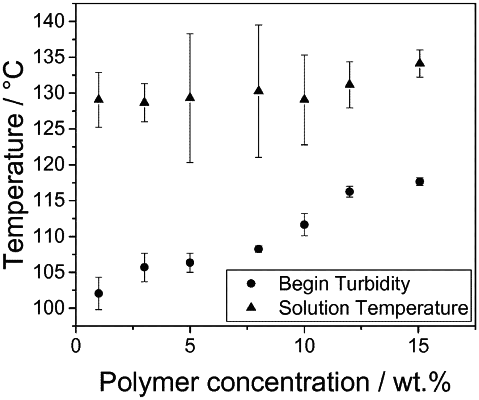| CPC C08J 3/14 (2013.01) [B29B 9/10 (2013.01); B29C 64/153 (2017.08); B33Y 70/00 (2014.12); B29K 2027/16 (2013.01); B33Y 10/00 (2014.12); C08J 2327/16 (2013.01); C08L 27/16 (2013.01)] | 19 Claims |

|
1. A method for producing a population of particles of a polymer, wherein the polymer is polyvinylidene difluoride (=PVDF) or a copolymer comprising polyvinylidene difluoride, wherein the polymer is dissolved in an organic solvent, wherein molecules of the organic solvent comprise or consist of 3 to 22 carbon atoms, one or more oxygen atom(s) as heteroatom(s) and at most one carbocyclic or heterocyclic residue comprising carbon atoms which carbocyclic or heterocyclic residue is an aromatic residue, wherein the carbon atoms in the carbocyclic or heterocyclic residue are carbon atoms taken from said 3 to 22 carbon atoms, wherein the one or more oxygen atom(s) is/are part of
at least one carboxylic acid ester group or carbonyl group, wherein the carbon atom in the carboxylic acid ester group and the carbonyl group is one of said 3 to 22 carbon atoms or/and
at least one ether group and at most three hydroxyl groups, wherein in case of presence of at least one hydroxyl group the number of ether groups always exceeds the number of hydroxyl groups,
wherein in case of presence of only 3 carbon atoms the molecule comprises additionally at least one pseudohalogen or additionally at least one further heteroatom selected from halogen, N, B, P and S, wherein the method comprises the following steps:
a) heating the organic solvent and the solid polymer immersed in the organic solvent at least until the polymer completely dissolves forming a solution,
b) cooling the solution until polymer particles are formed, and
c) separating the particles formed during step b) from the solution or from a gel formed from the solution during step b),
wherein at least 96% of the particles in the population of particles have a particle size in the range of 5 μm to 200 μm.
|